Ensuring your kitten is used to being handled from a young age will make grooming easier as they grow. Each cat breed has unique grooming needs and understanding that is key to maintaining your kitten’s healthy coat.
Why do you need to groom a kitten?
Cats and kittens are well-known for their cleanliness and grooming abilities, but as an owner there are times when you may need to step in and help.
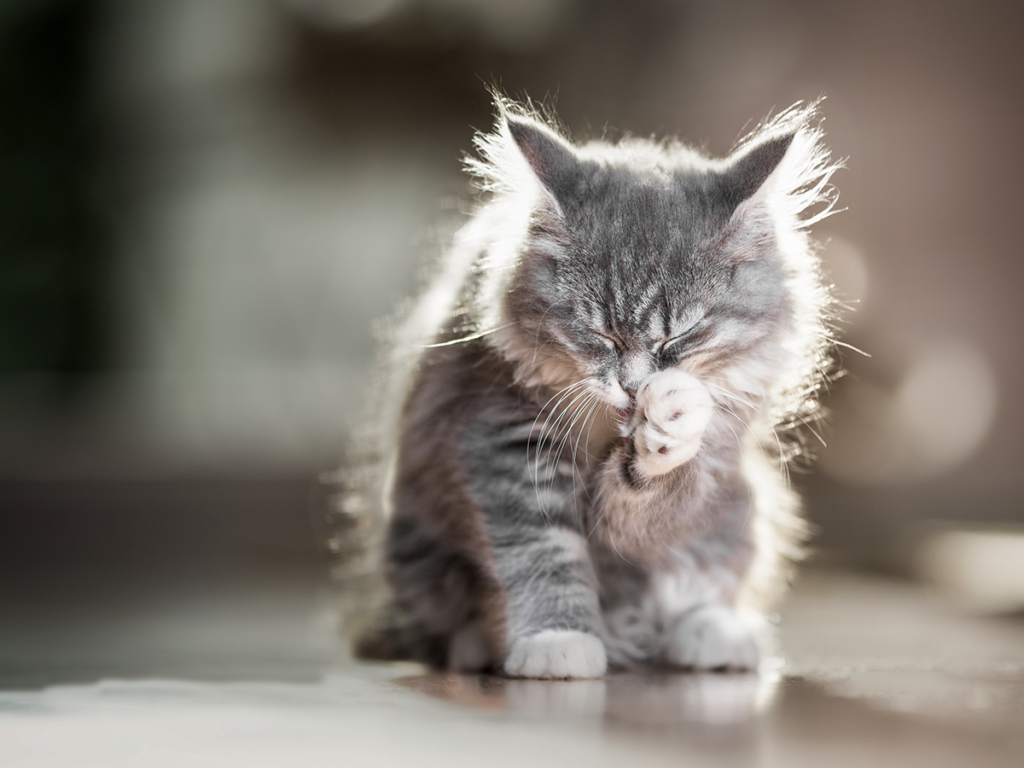
As well as supporting your kitten’s hygiene, grooming is a great way to familiarise yourself with their healthy skin, coat, eyes, ears and teeth. This will allow you to recognise when something may be cause for concern.
Introducing your kitten to grooming from an early age can be a great bonding experience for you and your new pet. Your kitten will also grow accustomed to being handled, which will make grooming less stressful for them, and calmer for you in the future.
How to brush a kitten
While kittens can often manage their own grooming routine, regular brushing can remove any dead hair and dirt build-up that could otherwise cause hairballs.
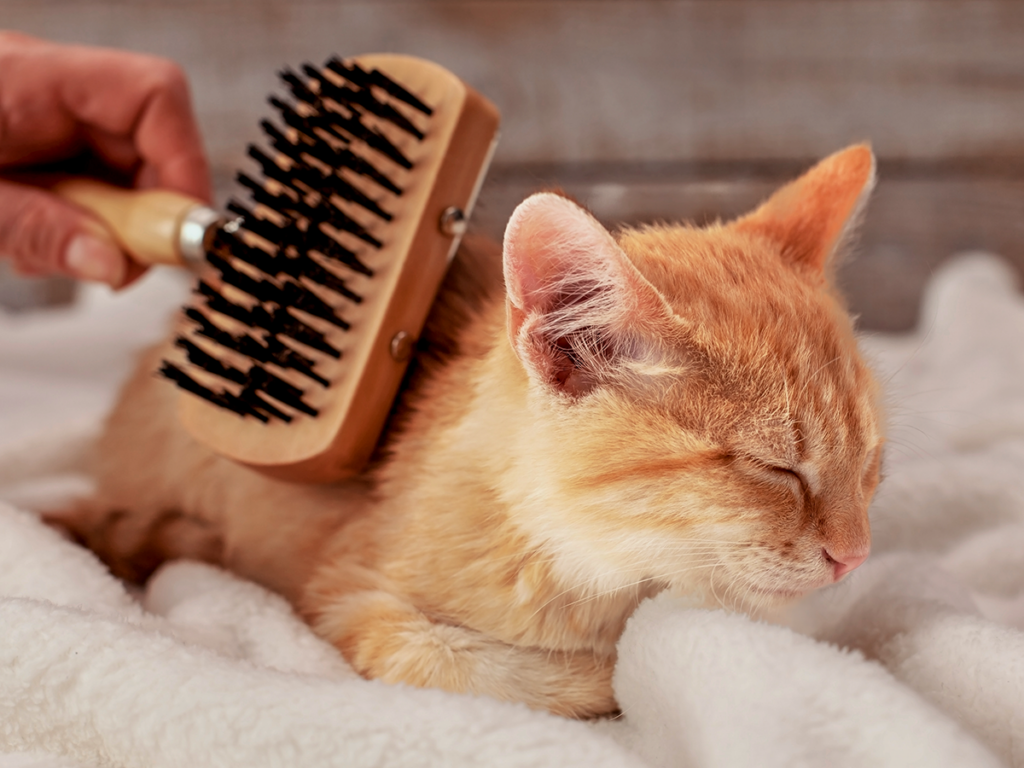
The brushing process can start from the head, slowly moving first to the front legs and chest, then to the hind legs and finally the tail. Your brush or comb should first move with the direction of the coat, then against to loosen any dead hair and debris.
The appropriate frequency of brushing and necessary tools will depend on the type of coat.
Particular attention should be paid to the areas behind the ears, and under the chin and paws. These are the places where mats are most frequent, and are very difficult to unravel once formed
Short hair
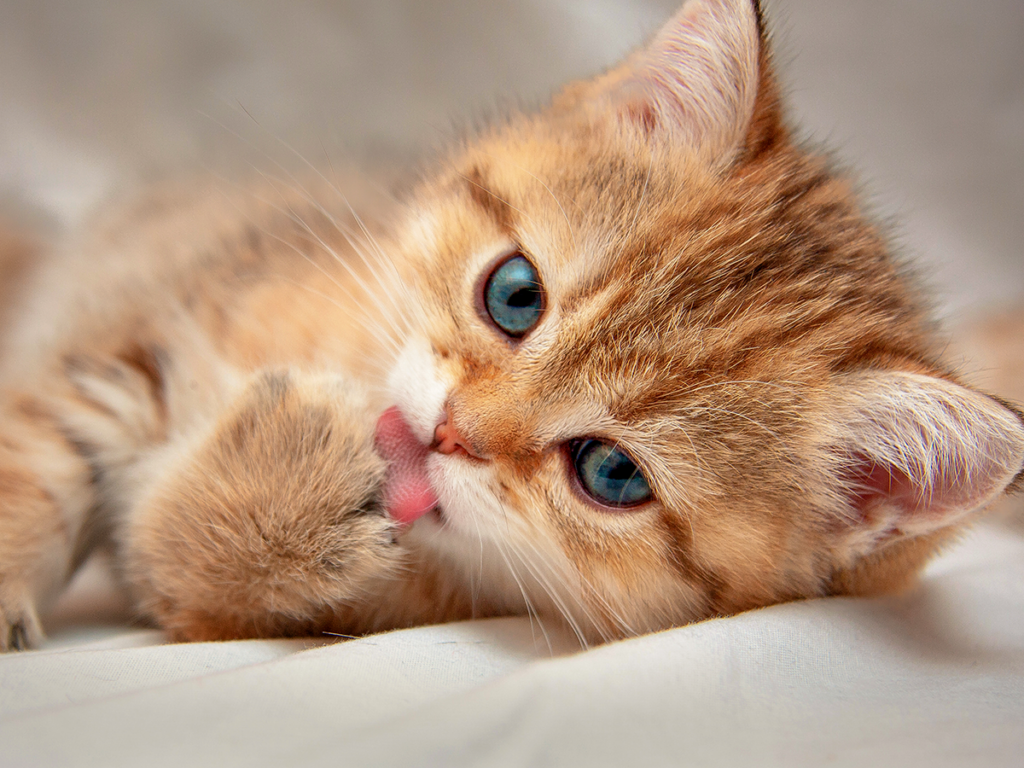
Weekly brushing will be enough to maintain a short-haired coat. First, use a grooming mitt to gently massage against the direction of your kitten’s coat, removing any dead hair, skin or debris. After this, use a soft brush to gently ease out any tangles.
Mid-length and long hair
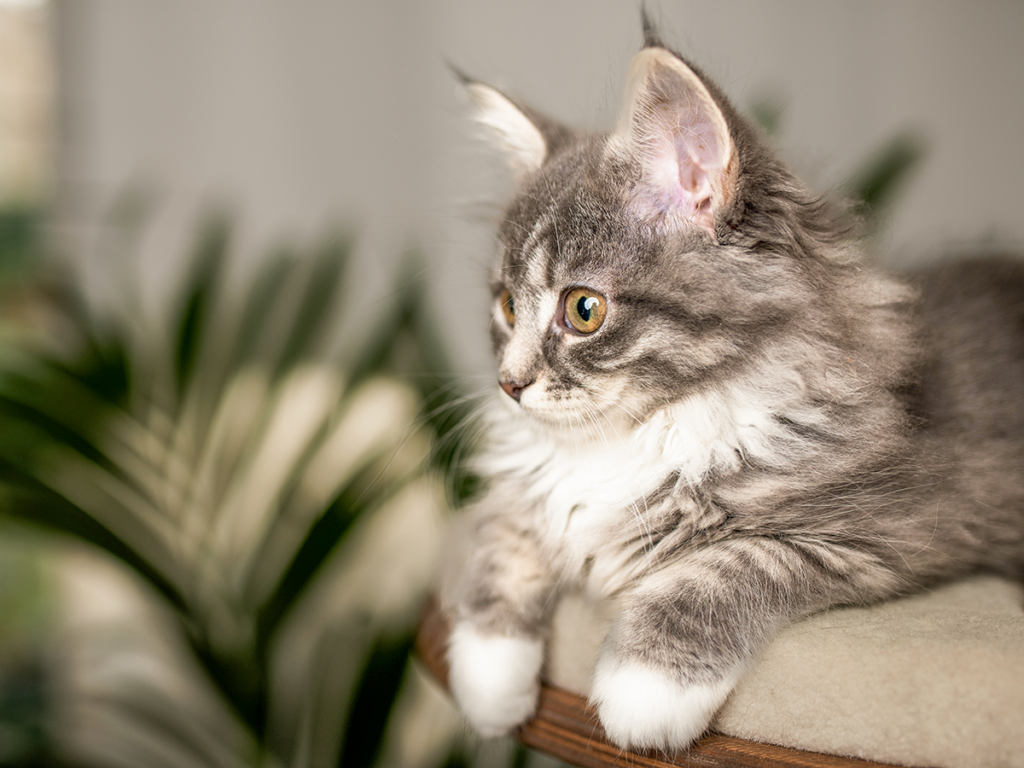
A few minutes of brushing once or twice a week is suitable for mid-length coats, while kittens with long coats may require brushing daily. A regular brush or large toothed metal comb is best for removing dirt and debris from these coat types. Care should be taken with combs as they go deeper into the fur than brushes, this means there’s a greater risk of irritating the skin.
Conditioning sprays may be useful to help prevent mats in breeds with dense coats, such as the Norwegian Forest cat or Maine Coon.
Giving your kitten a bath
An important part of your kitten’s grooming routine, particularly if they have a mid-length or long haired coat, is giving them a bath.
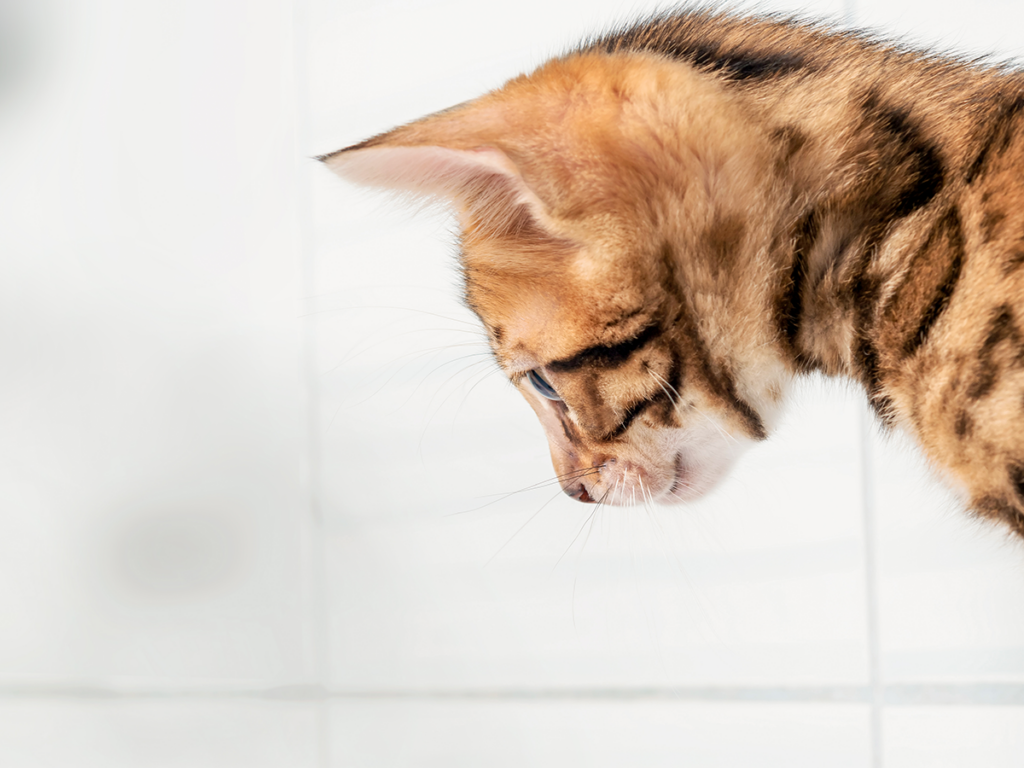
Kittens are known to be quite sensitive, so it’s important to introduce them to the experience gently, making sure they are as comfortable as possible at all points. This should avoid negative behaviours around bathing in the future, and reduce stress any for your kitten.
How to bathe a kitten
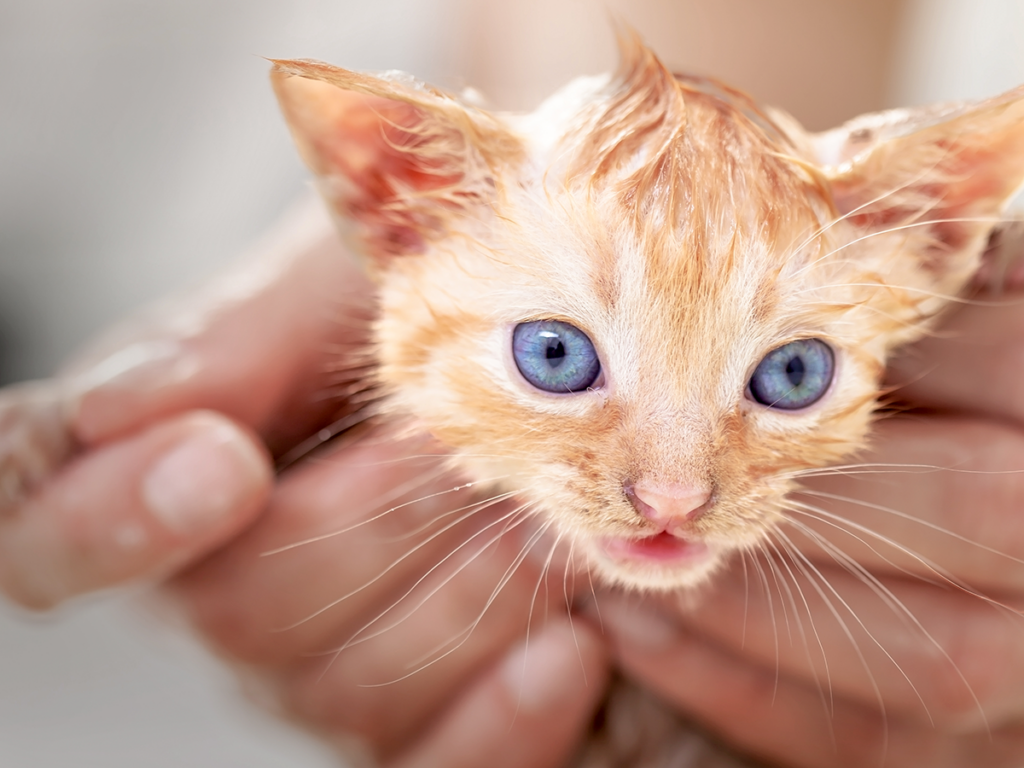
- Wet your kitten with a sponge to start with, praising them as you do. If they don’t react well, stop and try again a few days later until they are used to the process
- When your kitten is ready, run the bath with lukewarm, relatively shallow water – this should come up to your kitten’s shoulders when standing
- Calmly and gently introduce your kitten to the water. Cats are very sensitive to loud noises and sudden movements, and any disruption could scare them
- Allow your kitten to settle into the water, again reassuring and praising them for their behaviour
- Gently wet your kitten, avoiding their eyes and ears. Massage shampoo into their coat, paying close attention to their tail, chest and legs
- Rinse away all of the shampoo by poring water over your kitten’s back. If you’re rinsing their head it’s better to use a damp sponge or your hand, taking care around the eyes
How to dry a kitten’s coat
Once clean, take your kitten out of the bath and wrap them in a fresh, warm towel. Pat them down gently, starting with the stomach and them moving over the back, tail and head.
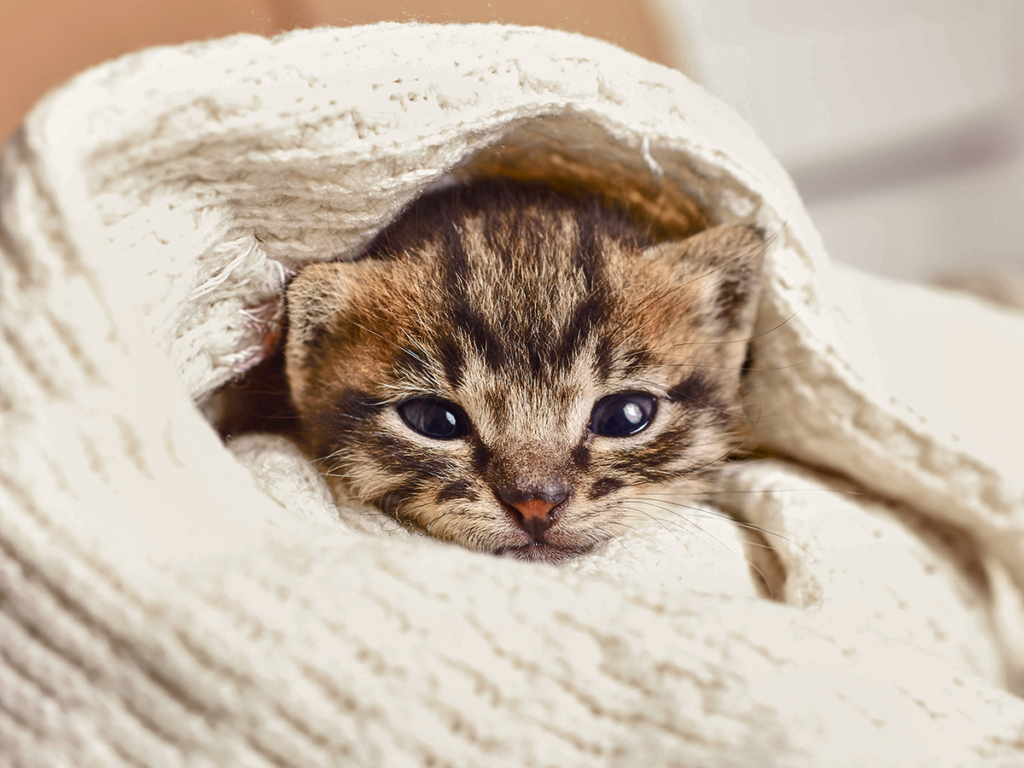
If you wish to use a hairdryer, it’s important to make sure the air is not too hot or cold, and that the noise doesn’t startle your kitten. Never use a hairdryer on your kitten’s head. Instead gently massage the area with a dry towel.
Cleaning your kitten’s ears
It’s recommended to regularly check your kitten’s ears for blockages, foreign objects, redness, itching, cuts or scratches and abnormal odours.
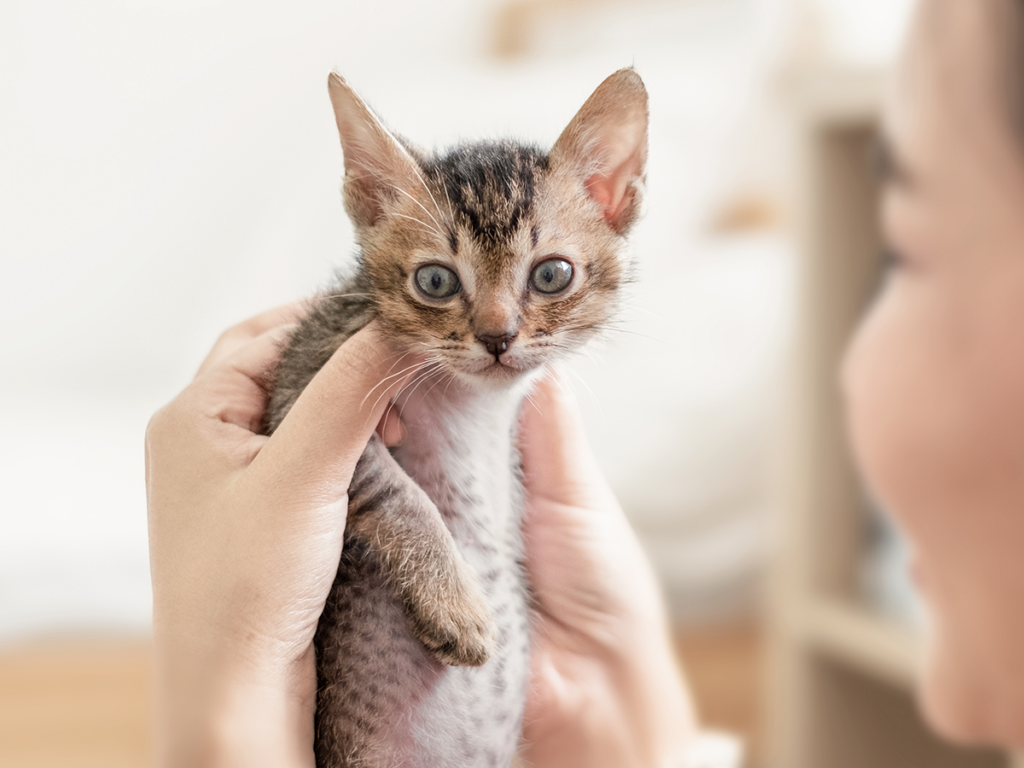
If your kitten’s ears require cleaning at home, your vet may give you a specially formulated solution to use. Carefully squeeze a few drops into your kitten’s ear canal, then gently massage the base of their ear. Finally, remove any residue with a clean compress. If you are ever unsure about your kitten’s ear health, contact your vet for further guidance.
How to clip you kitten’s nails
Kittens often use their claws to mark their territory. To avoid damage from scratching, without impacting their natural behaviours, it’s sometimes recommended to clip their nails. If done properly, this is a completely painless for your kitten.
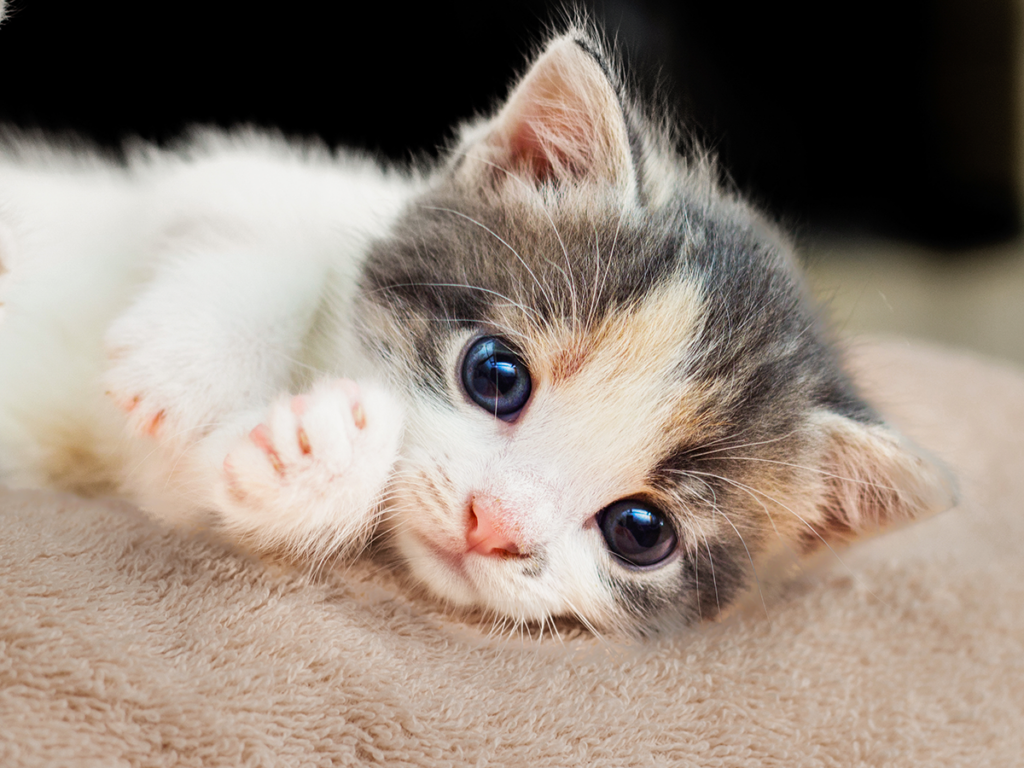
Start by choosing a comfortable place to sit, with your kitten on your lap. Carefully hold your kitten’s paws and trim their nails with guillotine clippers. Cut the white tip of the claw, staying well away from the quick – the fleshy part at the base of the claw. If you clip too close to the quick, you risk causing distress and bleeding. If you are ever uncertain of when to trim your kitten’s nails, or would like a demonstration, speak to your vet.
Caring for your kitten’s teeth
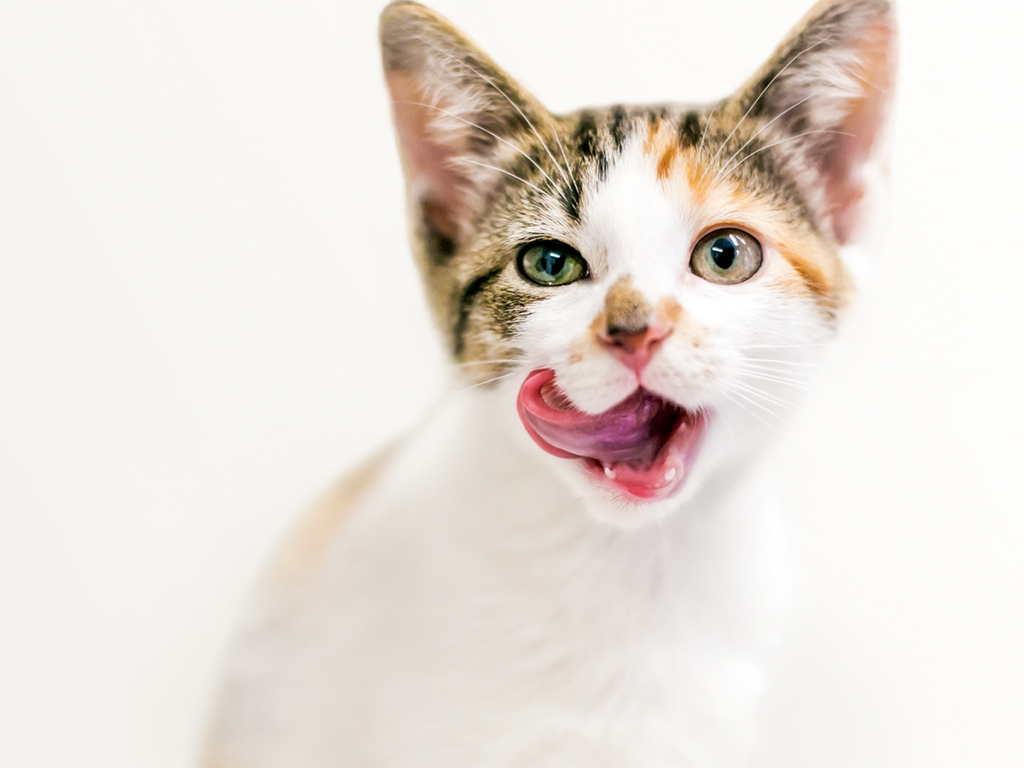
It’s important that you maintain your kitten’s oral hygiene as tartar and plaque build-up can lead to tooth loss, inflamed gums and bad breath. You can start to brush your kitten’s teeth carefully as soon as the majority of their milk teeth are complete. Their adult teeth will begin to come through at four months.
If you have any concerns about the condition of your kitten’s teeth then speak to your vet.
How to brush your kitten’s teeth
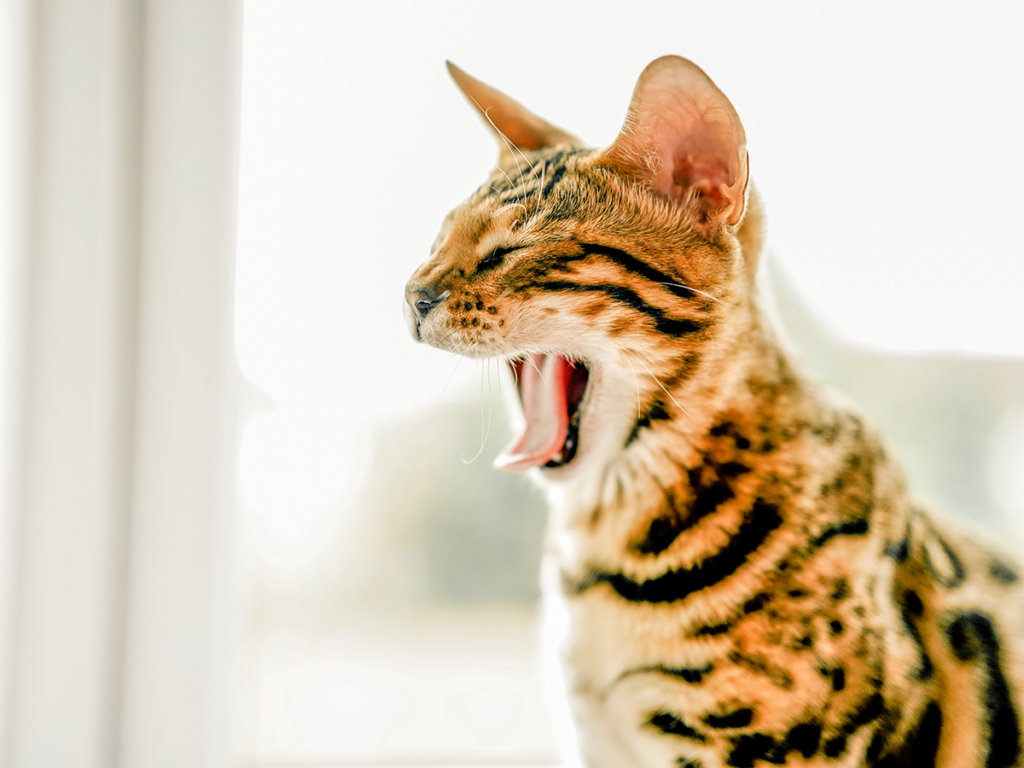
To brush your kittens teeth, use a special cat toothbrush and ask your vet for recommendations on the most suitable kitten toothpaste. Gently introduce the brush so that your kitten can get used to the feeling. Moving first from the molars, round to the incisors is believed to cause less discomfort to your kitten. Carefully brush in a circular motion, being careful not to damage the gums.



